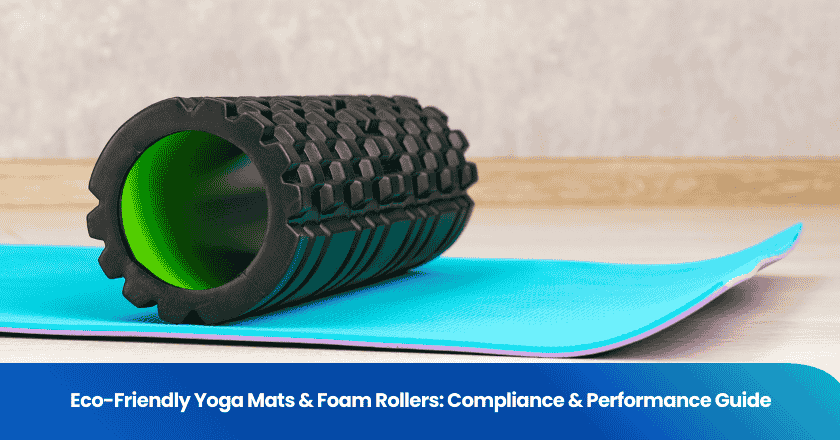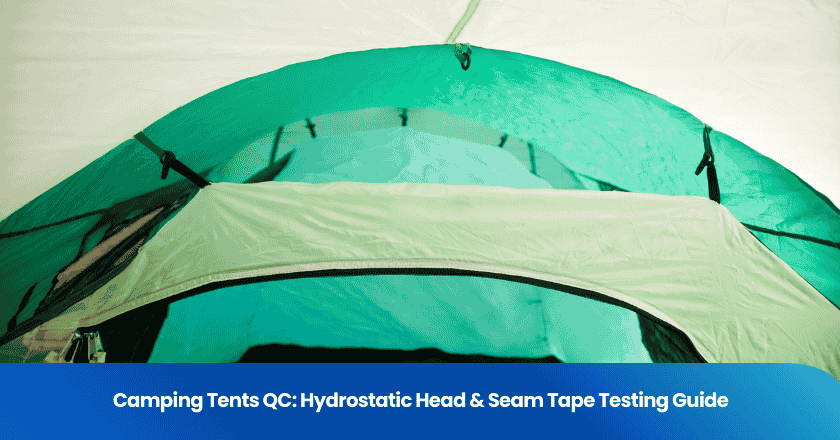
AI-powered visual quality inspection gives you the ability to automate the evaluation of products using advanced imaging and machine learning. You rely on these systems to analyze images and spot defects with remarkable precision. Visual quality inspection powered by AI achieves detection rates exceeding 99%. You can identify microscopic flaws and maintain consistent standards. With high-resolution cameras and deep learning, visual quality inspection offers real-time, uninterrupted inspection. This approach increases your confidence in product quality and supports efficient manufacturing.
Key Takeaways
- AI-powered visual quality inspection automates product evaluation, achieving defect detection rates over 99%. This technology enhances product quality and supports efficient manufacturing.
- The inspection process involves four stages: image capture, AI analysis, defect detection, and decision-making. Each stage uses advanced technology to ensure accuracy and consistency.
- AI systems analyze images quickly, processing hundreds of images per minute. This speed reduces human error and increases reliability in detecting subtle defects.
- Implementing AI inspection can significantly lower costs by reducing labor expenses and minimizing material waste. Early defect detection cuts down on scrap and rework.
- AI-powered inspection provides valuable data insights, helping you monitor trends and improve processes. This proactive approach supports better quality management.
Visual Quality Inspection Process
AI-powered computer vision transforms how you approach quality control by automating the entire inspection workflow. You can break down the process into four main stages: image capture, AI analysis, defect detection, and decision-making. Each stage uses advanced technologies to ensure you achieve high accuracy and consistency in your quality control operations.
Image Capture
You start the inspection process by capturing high-quality images of your products. The choice of imaging technology depends on your specific application and the level of detail you need to detect. Common options include:
- Line-scan cameras, which capture images line by line for high-speed inspection in industries like textiles and food processing.
- CIS imaging, which places sensors close to materials, making it ideal for shiny surfaces such as glass or plastic films.
- High-resolution cameras, which are essential when you need to detect defects smaller than 10 microns, such as in semiconductor or medical device manufacturing.
To achieve accurate defect detection, you must match your camera’s resolution to the smallest defect you want to find. For example, if you inspect a 2-meter object and need to spot a 1 mm flaw, you require a camera with at least 4 megapixels.
Proper lighting and well-defined inspection criteria set the foundation for reliable image capture and consistent quality control.
AI Analysis
Once you have the images, you rely on AI-powered vision systems to analyze them. These systems use machine learning and deep learning algorithms to process visual data. You benefit from several types of learning:
- Machine learning algorithms learn from structured data and predefined features, providing a solid base for automated visual inspection.
- Deep learning mimics the way human brains work, allowing the system to recognize subtle variations and anomalies in product appearance.
- Supervised learning uses labeled data to train the system, enabling it to classify defects accurately.
You gain a significant advantage over manual inspection. AI-driven AVI systems can process hundreds or thousands of images per minute, maintaining high accuracy and consistency. Human inspectors often miss subtle defects due to fatigue or variability, but AI-powered vision systems deliver reliable results every time.
Defect Detection
During this stage, the AI-driven AVI system identifies and classifies defects in real time.
AI-powered vision systems achieve defect detection rates between 97% and 99%. This level of accuracy far surpasses traditional manual inspection, where false positives can reach up to 50%. You can also identify microscopic flaws and analyze trends over time, which supports proactive quality control and helps prevent recurring issues.
Decision-Making
After detecting defects, you use AI-driven AVI systems to make fast, automated decisions. These systems classify each product as Pass, Rework, or Reject based on your inspection criteria. The response time is impressive—some applications, like hot-end bottle inspection, deliver results within milliseconds, while weld seam inspection times drop from minutes to seconds.
AI-powered systems continuously learn from each inspection, adapting to changes in your production environment. This self-learning capability improves accuracy and enables dynamic quality control.
You also benefit from a feedback loop. The system analyzes large volumes of production data, refines its algorithms, and predicts defect trends. By integrating with your manufacturing execution systems, you can make real-time adjustments and maintain the highest standards of quality control.
AI Applications in Industry
AI-powered visual quality inspection adapts to a wide range of industries, helping you maintain high standards and address complex production challenges. You can see its impact in sectors that demand precision, speed, and adaptability.
Manufacturing
You rely on AI to automate inspection tasks that once required manual labor. In manufacturing, AI-driven systems scan products for surface defects, dimensional errors, and assembly issues. For example, a leading brick manufacturer improved production efficiency by using AI to detect defective bricks, which reduced warranty claims. You can also find AI systems in beverage production, where they identify keg leakage and minimize product loss by up to 96%. These solutions adapt to high-variability environments, ensuring consistent quality even as product designs change.
Electronics
In electronics, you use AI-powered visual inspection to catch microscopic defects that human inspectors might miss. These systems operate continuously, providing real-time monitoring and instant feedback. For instance, an electronics manufacturer reduced defect escape rates by 94% after deploying AI inspection. You benefit from high precision and the ability to scale across multiple production lines. AI adapts to material variations and process changes, maintaining quality without frequent reconfiguration.
- Detects defects in first-responder radios, reducing inspection time and escape rates.
- Identifies subtle flaws invisible to the human eye, ensuring product reliability.
Automotive and Aerospace
In automotive and aerospace, you depend on AI to maintain safety and compliance. AI systems monitor parts and assemblies in real time, instantly flagging deviations from inspection standards. These solutions perform inspections without fatigue, ensuring accuracy throughout production. Can handle variations in products and processes, which is essential in dynamic manufacturing environments.
- Provides real-time monitoring and reporting for compliance.
- Detects deviations instantly, supporting high safety standards.
Benefits of AI Inspection
Accuracy and Consistency
You achieve unmatched accuracy with AI-powered automated visual inspection. These systems detect subtle defects that human inspectors often miss. Detection rates exceed 95.99%, which means you maintain consistent quality across every shift. Unlike manual inspection, AI does not suffer from fatigue or variability. You can rely on automated systems to apply the same quality criteria every time, ensuring your products meet the highest standards.
| Aspect | AI-Powered Inspection | Human Inspection |
|---|---|---|
| Consistency | Higher due to precision | Lower due to fatigue |
| Performance Variation | Maintains accuracy continuously | Prone to errors from monotony |
| Impact of Fatigue | None | Significant |
| Training Level | Consistent across time | Varies with experience |
Speed and Efficiency
Automated inspection delivers real-time results. You can monitor production lines continuously and identify defects instantly. This speed increases your throughput and minimizes the need for rework. AI-driven systems process thousands of images per minute, which manual inspection cannot match. You benefit from enhanced quality control inspections and faster decision-making, allowing your facility to operate at full capacity.
- Real-time defect detection boosts production rates.
- Automated systems reduce bottlenecks and keep your lines moving.
Cost Reduction
You lower costs by adopting automated visual inspection. These systems reduce labor expenses and minimize material waste. Early defect detection means you cut down on scrap and rework. Automated solutions work around the clock, so you save on overtime and training costs. Facilities that switch to AI-powered inspection often see significant savings, sometimes up to 90% compared to traditional methods.
Data Insights
AI-powered inspection gives you valuable data insights. You can monitor trends in real time and spot recurring issues before they affect product quality. Automated systems analyze inspection data, helping you identify patterns and inefficiencies. This information supports predictive maintenance and proactive quality management. You use these insights to improve processes, schedule maintenance, and ensure consistent results.
- AI systems provide real-time monitoring and analysis.
- Data-driven insights help you prevent defects and optimize operations.
- Predictive analytics enable you to address issues before they impact quality.
You gain a powerful tool for maintaining quality by using AI-powered visual inspection. These systems inspect products faster and more accurately than manual methods, providing real-time feedback and reducing defect rates. You see continuous advancements, such as robotics and real-time analytics, shaping the future of automated visual inspection. As adoption grows, you can assess your processes and identify areas where AI-driven inspection delivers the greatest impact.
Embrace AI-powered inspection to elevate your standards and prepare for the next era of quality assurance.
FAQ
What types of defects can AI-powered visual inspection detect?
You can detect surface flaws, dimensional errors, assembly mistakes, color inconsistencies, and contamination. AI systems identify both visible and microscopic defects, ensuring your products meet strict quality standards.
How accurate are AI-powered visual inspection systems?
You achieve detection rates between 95% and 99%. These systems outperform manual inspection by maintaining high accuracy and consistency, even during long production runs.
Can you integrate AI inspection with existing production lines?
Yes, you can integrate AI-powered inspection systems with most production lines. These solutions adapt to various environments and support real-time monitoring without disrupting your workflow.
How does AI inspection improve manufacturing efficiency?
You benefit from faster inspections, reduced rework, and lower scrap rates. Automated systems process thousands of images per minute, allowing you to maintain high throughput and consistent product quality.
Is AI-powered visual inspection suitable for small and medium-sized businesses?
You can implement AI inspection in businesses of any size. Scalable solutions allow you to start small and expand as your needs grow, making advanced quality control accessible to all.
Grow your business with TradeAider Service
Click the button below to directly enter the TradeAider Service System. The simple steps from booking and payment to receiving reports are easy to operate.



